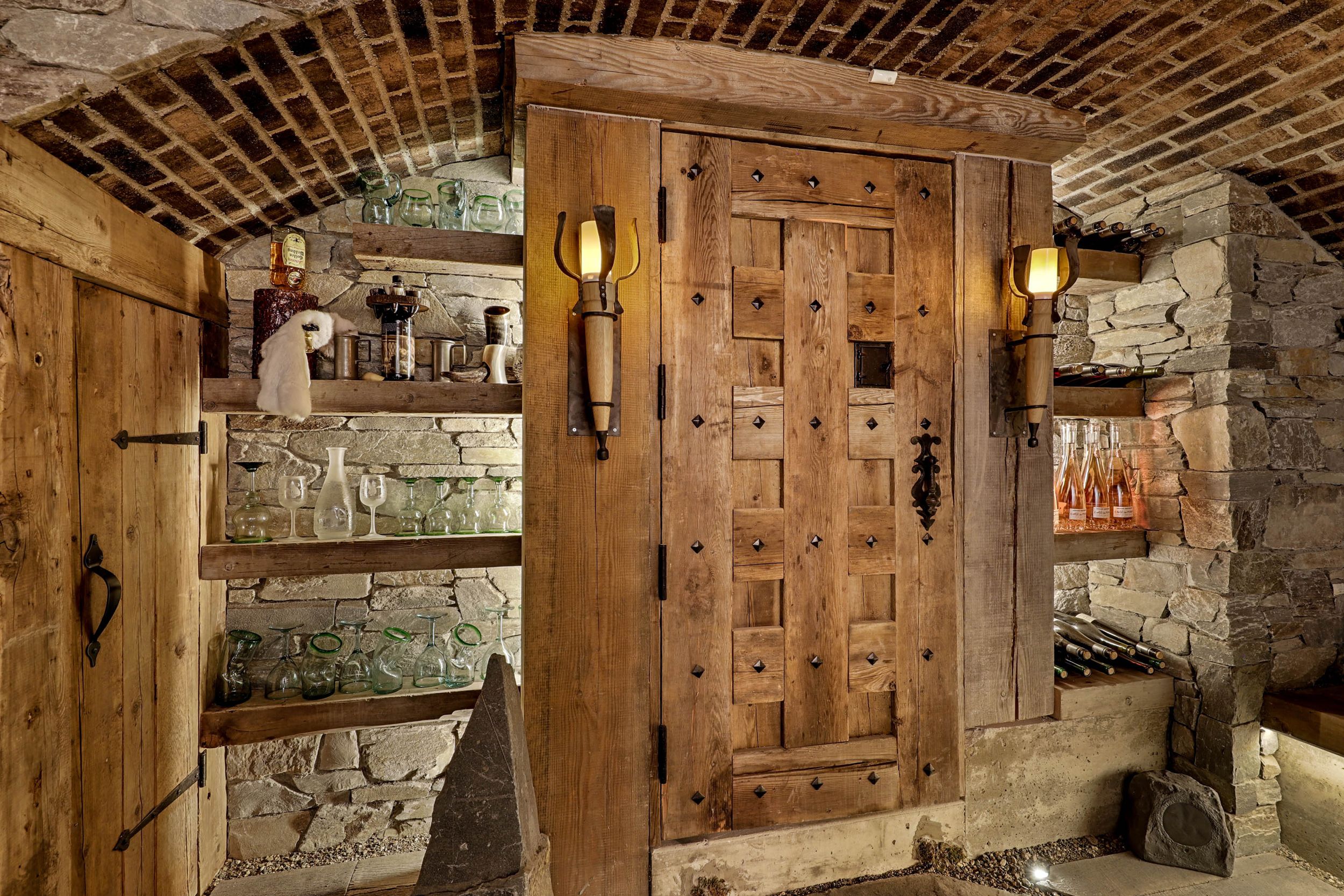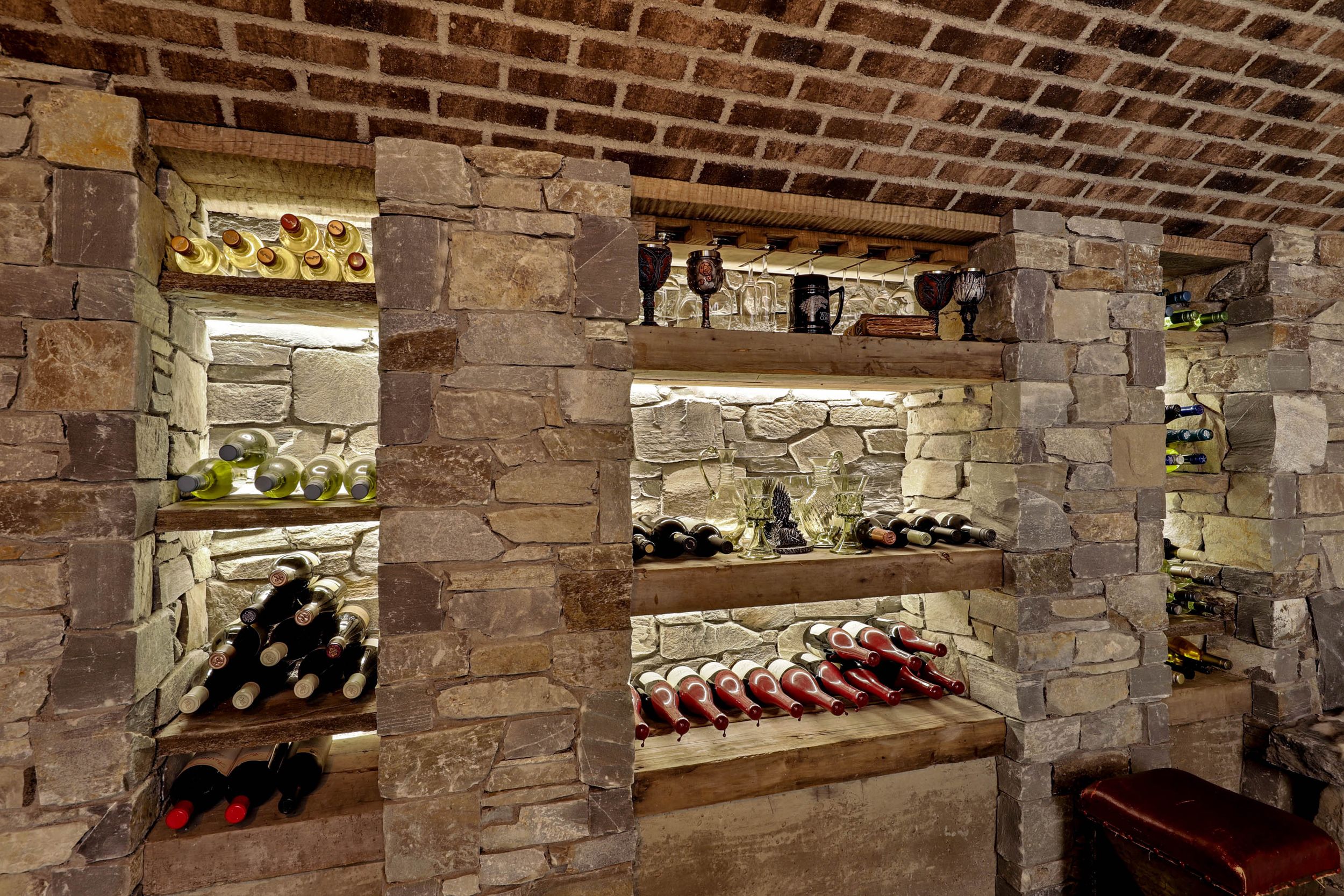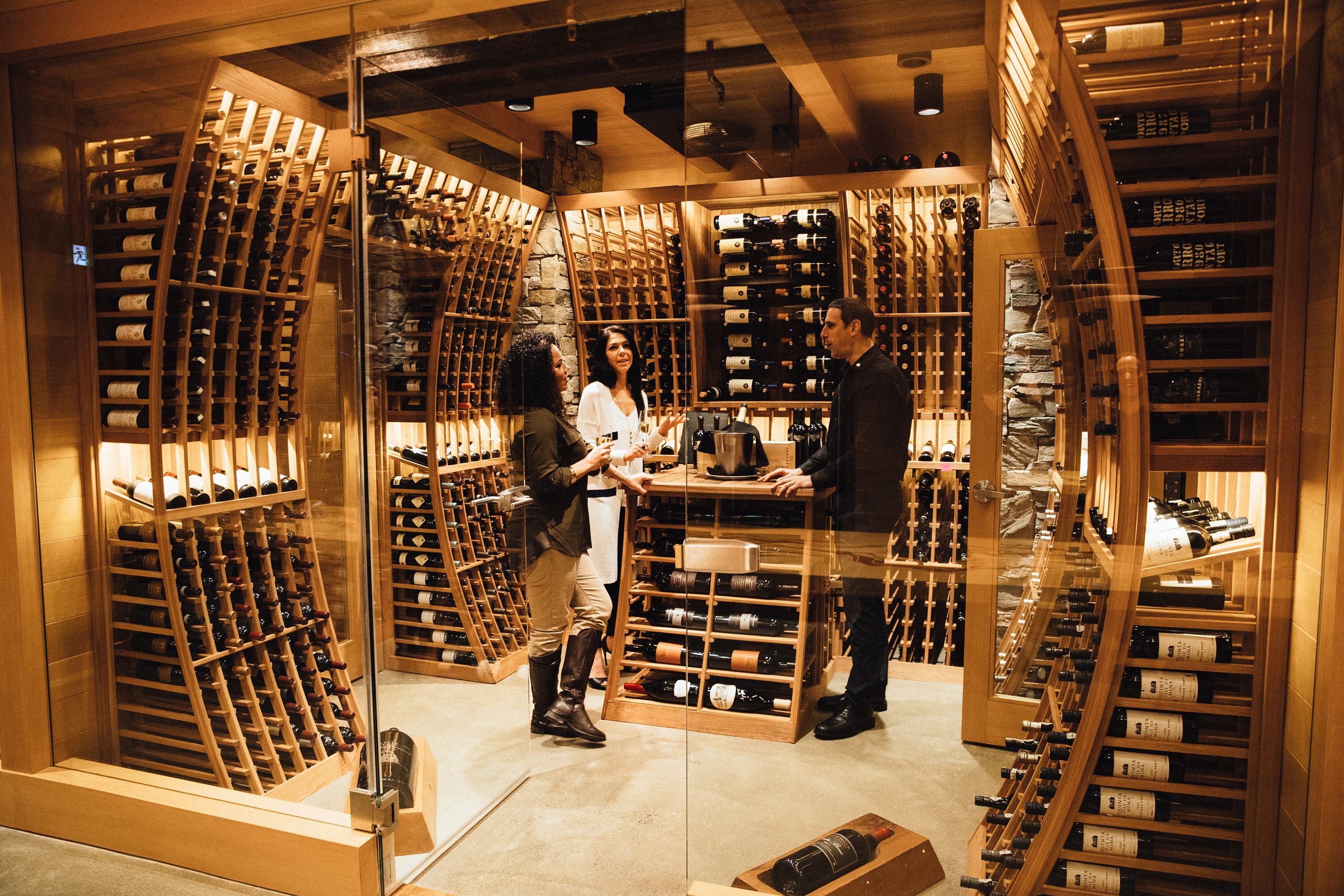Is it Time You Built a Wine Cellar?
Ike Seaman had a long time to plan his dream wine cellar, and plenty of motivation for doing so: as the Wickaninnish Inn’s wine director, he had to store the bottles for his award-winning wine list in a dark, cramped crawl space accessible only by a small hatch.
What he wanted instead was a multi-purpose space that combined wine showcase, meeting facility and dining room. It had to be comfortable. It had to be functional. It had to have room to grow the collection. Most of all, it had to have a “wow factor.”
It took several years, but Seaman finally has his dream cellar, with sleek chillers for white and sparkling wines, a moodily lit glassed-in area where the reds are kept on custom wooden racking, and quite possibly the most beautiful dining table in Canada.
“To me a wine cellar is a showcase item,” Seaman says. “Our cellar is not actually that large, but people still walk in and go, ‘Ohhhh.’”
Not just a fancy cave
You likely don’t need space for 10,000-plus bottles of wine like the Wickaninnish Inn does. But if you drink wine, you probably need a better system for storing it. Wine, after all, is a living thing. How it’s kept will affect how long it lasts, and how good it tastes.
There are any number of freestanding solutions ranging from a $45 IKEA Omar shelving unit to a $10,000-plus EuroCave Premiere Double L wine fridge.
But at some point you may want to build an actual wine cellar, and for that you may want to call in Shane Watt of Duncan-based Original Wine Cellars. He’s possibly the only person on Vancouver Island specializing in wine cellars (on the Mainland, there’s Cellar Solutions Inc. and Custom Wine Cellars Vancouver) and only takes on “projects that are really interesting.”
About 12 years ago he was working as a mason and his wife was in the wine industry and bringing home lots of wine. “I built a wine cellar in our house and I thought, ‘This is a better way to do masonry,’ ” Watt recalls.
Since then, he’s built several wine cellars in B.C. and Alberta, for collections that range from 400 to 1,000 bottles. He just completed one in the Shuswap in a “Game of Thrones” theme, with four-inch-thick doors and a massive cave. “That was the biggest one we’ve done,” he says. “Before we built that cellar, they didn’t even have their wine in a climate-controlled setting.”


Game of Thrones wine cellar, photos by Dom Koric
Building a wine cellar, though, is more complicated than just building a fancy cave. It might require an electrician to install cooling units and lighting, and other pros for insulation, drywall, painting and “everything.” Basically, Watt says, “You’re a project manager in a small room.”
A controlled environment
The most important thing about a cellar is the wine itself, and there are several things to consider when storing it, says Seaman.
“The first big thing in wine is light,” he says. Direct sunlight and bright lighting can rearrange a wine’s chemical compounds, a wine fault known as being “light struck,” which damages its taste, aroma, colour and mouthfeel. Keep your wine in the dark and keep any lighting soft and dim.
“Temperature is the next thing,” Seaman says.
Wine should be kept between 11°C and 14°C. Too warm and wine will expand, forcing aromas to escape through the cork and leaving the wine flat and “cooked.” Too cold (as in your kitchen fridge) and the cork will dry out, allowing oxygen to seep into the bottle and damage the wine. Extreme or frequent temperature swings are even worse.
All this is why Watt tries to steer people away from the display cellars you see in some high-end modern homes—they let in too much light and are too hard to climate control, he says.
You should also keep your wine in a place that is stable and sturdy—“Vibrations break down wine,” Seaman explains—and has a controlled humidity of between 50 and 80%, damp enough to keep corks from drying out, but not so wet it will promote mould.
Once you’ve figured all that out, you can consider what your cellar will look like.
A functional space
 “A cellar is a bit of a show piece and putting in elements that are unique to the owner, that really speak to who you are, is a nice touch,” Seaman says.
“A cellar is a bit of a show piece and putting in elements that are unique to the owner, that really speak to who you are, is a nice touch,” Seaman says.
Your cellar can be sleekly modern or designed like a medieval dragon’s lair. It can have standard racking or something custom made. Bottles should be stored on their sides (so corks don’t dry out), but otherwise, how you design your cellar is up to you.
“Everybody has a different system and there is no ‘This is the way you should do it,’ ” Seaman says. “Arrange it in a way that makes sense to you and, if you’re working with other people, so they can find what they need.”
The Wick’s cellar is beautiful, but its most important feature is that when a guest wants a glass of Blue Mountain Brut or a bottle of Screaming Eagle Cabernet, staff can find it right away.
As Seaman says, “This cellar is a workhorse before it is a show horse.”





